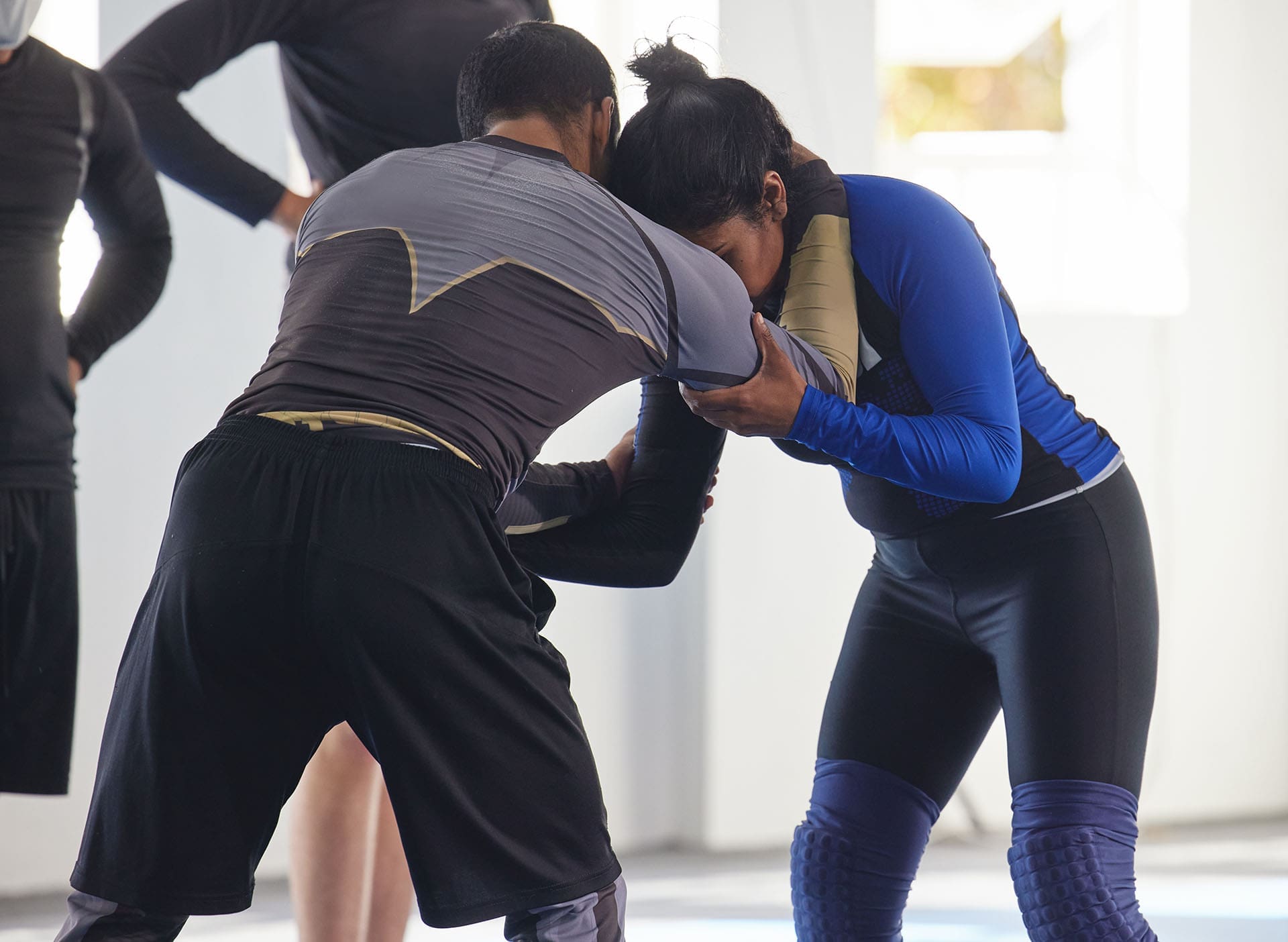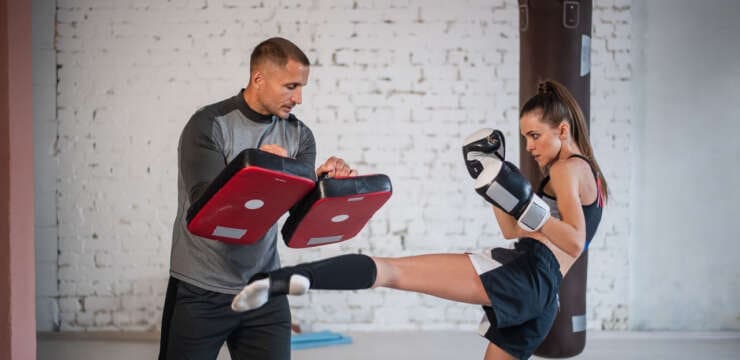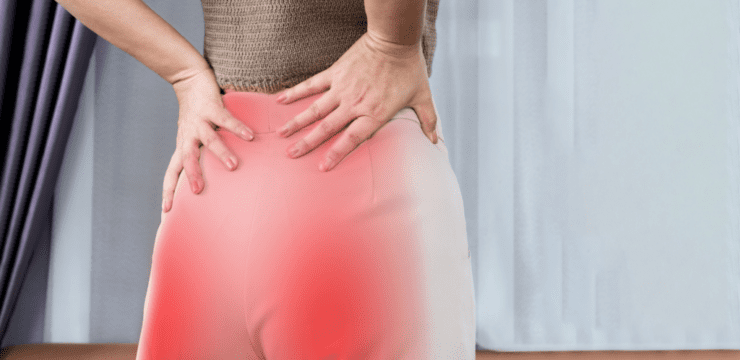
Table of Contents
Martial Arts Brain Injuries, CTE, and Integrative Chiropractic Care: What Fighters Need to Know

Introduction: When “Just a Hard Spar” Becomes a Brain Injury
Martial arts—whether MMA, boxing, kickboxing, Muay Thai, or traditional styles—demand toughness. Fighters accept bruises, cuts, and sore joints as part of the journey. But repeated shots to the head are different. They can cause traumatic brain injuries (TBIs) that affect thinking, mood, balance, and even long-term brain health.
Research in contact sports shows that repetitive head impacts can lead to short-term problems like headaches, vertigo, and confusion, and long-term issues such as memory loss, personality changes, and increased risk of neurodegenerative diseases like Chronic Traumatic Encephalopathy (CTE).NINDS+2PMC+2
At the same time, more clinicians— including integrative chiropractors and dual-scope providers like Dr. Alexander Jimenez, DC, APRN, FNP-BC—are focusing on ways to support the brain and nervous system after injuries. Their care plans often combine spinal adjustments, soft-tissue therapy, balance and vision training, and lifestyle changes to help the brain heal more effectively. Synergy Chiropractic+4El Paso, TX Doctor Of Chiropractic+4El Paso, TX Doctor Of Chiropractic+4
This article explains:
-
How brain injuries happen in martial arts
-
Short-term and long-term symptoms, including CTE
-
Why repeated blows—not just big knockouts—matter
-
How integrative chiropractic care may help recovery by improving alignment, nervous system function, cerebrospinal fluid (CSF) flow, and neuroplasticity
How Brain Injuries Happen in Martial Arts
Concussions and Subconcussive Blows
A traumatic brain injury happens when a forceful bump, blow, or jolt to the head or body disrupts normal brain function. NINDS+1 In martial arts, this can occur when:
-
A punch, elbow, kick, or knee snaps the head back or to the side
-
The head hits the mat or cage floor
-
Whiplash-type forces from throws or takedowns shake the brain
A concussion is a type of mild TBI. But not all dangerous hits cause obvious concussion symptoms. Subconcussive blows are impacts that don’t cause clear immediate symptoms, yet still stress and injure brain tissue over time. Studies in contact sports show that cumulative repetitive head impacts—whether or not they cause diagnosed concussions—are strongly linked to later brain problems and CTE. PMC+2Mass General Brigham+2
MMA and Boxing: High Head-Impact Load
Researchers studying fighters in the Professional Fighters’ Brain Health Study found that greater exposure to repetitive head trauma is associated with lower brain volumes and slower processing speed in active fighters. British Journal of Sports Medicine+1
A separate review of MMA fighters reports that:PubMed+1
-
MMA carries a high risk of head trauma
-
Head impacts occur not only during fights but also in training and sparring
-
Cognitive testing often shows lower scores in fighters with more years and bouts
In short, every hard spar, every “light” session that turns competitive, and every fight adds to the total load of head impacts—and the brain keeps the score.
Short-Term Symptoms: Vertigo, Disorientation, and “Not Feeling Right”
Right after a hard hit, fighters may experience classic concussion-like symptoms, including: NINDS+2PMC+2
-
Vertigo or a spinning sensation
-
Dizziness and balance problems
-
Confusion or feeling “foggy”
-
Headache and pressure in the head
-
Nausea or vomiting
-
Trouble focusing or tracking moving objects
Resources on combat-sports brain injury also describe emotional and cognitive symptoms: anxiety, depression, panic attacks, irritability, sleep problems, and difficulty concentrating. Rezon+1
These early signs matter. Even if a fighter “clears up” after a few minutes, the brain has still been stressed. Returning to sparring or competition too soon increases the risk of further injury and can prolong recovery time and complicate the process. British Journal of Sports Medicine+1
Long-Term Risks: From Cognitive Impairment to CTE
What Is Chronic Traumatic Encephalopathy (CTE)?
CTE is a progressive neurodegenerative disease linked to repetitive head impacts over time. PMC+2PMC+2
Key points from current research:
-
CTE has been observed in athletes from various sports, including boxing, MMA, American football, hockey, soccer, and others. PMC+2PMC+2
-
It’s associated with the abnormal buildup of tau protein and changes in multiple brain regions, particularly those involved in memory, mood, and decision-making. PMC+1
-
A recent meta-analysis of athletes with repetitive head impacts shows CTE is not rare among contact-sport veterans, and risk rises with years of play and impact load. PubMed+2Fisiología de le Ejercicio+2
In fighters, CTE symptoms often include: PMC+2PMC+2
-
Memory problems and slower thinking
-
Poor attention and difficulty planning
-
Mood changes (depression, irritability, anxiety)
-
Impulsive or aggressive behavior
-
In some cases, movement problems similar to Parkinson’s disease
MMA Fighters and CTE Concerns
Case reports and reviews focusing on mixed martial arts warn that the sport’s combination of striking, clinch work, ground-and-pound techniques, and long training camps can create a high cumulative head-impact load, similar to or greater than that of other combat sports. PMC+2Carrick Learning HQ+2
Journalistic investigations—such as features in The Athletic on fighters who already fear they’re living with CTE-like symptoms—echo what many athletes feel:
-
They notice memory lapses, word-finding difficulties, and mood swings
-
They worry that the sport they love may cost them their long-term brain health ResearchGate+1
While CTE can only be confirmed after death, the pattern is clear: more years, more fights, and more head impacts increase risk. PMC+2Mass General Brigham+2
Psychological, Behavioral, and Physiological Changes Over Time
Brain injuries in martial artists are not just about “getting rocked.” They touch every part of life.
Psychological and Emotional Effects
Long after a TBI, fighters may develop: Rezon+2Northwestern Health Sciences University+2
-
Anxiety and depression
-
Irritability and anger outbursts
-
Panic attacks
-
Loss of motivation or apathy
-
Sleep disturbances
These changes can strain relationships, careers, and training. Some fighters withdraw from teammates and family because they “don’t feel like themselves anymore.”
Cognitive Decline
Research on professional fighters shows that increasing exposure to head trauma is linked with: British Journal of Sports Medicine+2PubMed+2
-
Slower processing speed (taking longer to think and react)
-
Lower scores on memory and attention tests
-
Reduced volume in certain brain structures
This is exactly what martial artists describe when they say, “I’m slower than I used to be,” or “I can’t keep up with the game plan in the corner.”
Physiological and Neurological Changes
At the tissue level, repetitive head impacts can trigger: PMC+2APCZ+2
-
Neuroinflammation (chronic brain inflammation)
-
Disruption of the blood–brain barrier
-
Damage to axons (the “wiring” that connects brain cells)
-
Abnormal tau and other protein build-up in CTE
These biological changes help explain why symptoms can develop and intensify over time, even after a fighter retires.
Why Martial Artists Are at Special Risk
Fighters face unique risk factors: PubMed+2PMC+2
-
High-impact rounds during fights and hard sparring
-
Frequent training—sometimes multiple sessions per day
-
Cultural pressure to “tough it out,” hide symptoms, or keep fighting
-
Rules and scoring that reward knockouts and striking volume
Studies on head trauma exposure in MMA show that both male and female fighters accumulate significant head impacts per bout, with some differences in how impacts are distributed between them. PMC+1
All of this makes early recognition, smart rest, and supportive care essential.
Where Integrative Chiropractic Care Fits In
Integrative chiropractic care does not replace emergency evaluation, brain imaging when needed, or medical management. Instead, it acts as a supportive, nervous-system-focused partner in a fighter’s recovery and long-term brain health.
Many integrative chiropractors—such as Dr. Alexander Jimenez in El Paso—work as part of a team that may include neurologists, primary care providers, physical therapists, vestibular therapists, psychologists, and nutrition professionals. personalinjurydoctorgroup.com+4El Paso, TX Doctor Of Chiropractic+4El Paso, TX Doctor Of Chiropractic+4
Core Goals of Integrative Chiropractic Care After TBI
Clinical articles and chiropractic case discussions highlight several key goals: El Paso, TX Doctor Of Chiropractic+5carrchiropracticclinic.com+5Calibration Brain & Body+5
-
Correct spinal and postural misalignments
-
Focus on the cervical spine (neck), mid-back, and pelvis
-
Restore joint motion and reduce muscle guarding
-
Improve head and neck posture to reduce strain on the brain and vestibular system
-
-
Enhance nervous system function
-
Reduce mechanical stress on the spinal nerves and the brainstem region
-
Support better communication between the brain and body
-
Decrease pain signals that keep the nervous system “on high alert”
-
-
Support balance, coordination, and sensory integration
-
Use vestibular and eye-movement exercises
-
Combine balance drills with gentle neck and upper-back work
-
Help patients relearn stable movement patterns after a concussion
-
-
Improve circulation and cerebrospinal fluid (CSF) dynamics
-
Restoring neck and thoracic mobility can support blood and CSF flow around the brain and spinal cord
-
Better circulation helps deliver oxygen and nutrients and remove metabolic waste products from injured tissues
-
-
Stimulate brain neuroplasticity
-
Repeated, controlled movement patterns and sensory exercises encourage the brain to form new connections
-
Over time, this can help bypass damaged pathways and improve function
-
Dr. Alexander Jimenez’s Clinical Perspective on Fighters and TBIs
In his clinical writing and educational content, Dr. Jimenez emphasizes that head injuries rarely occur in isolation. They often travel with neck injuries, spinal misalignment, muscular imbalance, and even gut or sleep problems that make recovery harder. El Paso, TX Doctor Of Chiropractic+3El Paso, TX Doctor Of Chiropractic+3El Paso, TX Doctor Of Chiropractic+3
From his dual-scope viewpoint as both a chiropractor and a family nurse practitioner, he notes that:
-
Cervical and upper-thoracic misalignments can worsen headaches, vertigo, and visual strain after TBI. Correcting these patterns, combined with vestibular rehabilitation, often improves balance and decreases motion sensitivity. El Paso, TX Doctor Of Chiropractic+2El Paso, TX Doctor Of Chiropractic+2
-
Postural changes—like forward-head posture and rounded shoulders—can emerge after head and neck trauma. Targeted chiropractic adjustments, soft-tissue therapy, and rehab exercises help fighters restore a more neutral posture, which reduces strain on the brain and spinal cord. El Paso, TX Doctor Of Chiropractic+2El Paso, TX Doctor Of Chiropractic+2
-
Whole-body, integrative care matters. Brain-injured patients often benefit from anti-inflammatory nutrition, sleep optimization, stress reduction, and carefully dosed exercise, in addition to manual therapy. Calibration Brain & Body+3El Paso, TX Doctor Of Chiropractic+3El Paso, TX Doctor Of Chiropractic+3
Clinically, this approach aims not only to reduce symptoms—like vertigo, headaches, and neck pain—but also to help fighters think more clearly, move more smoothly, and feel more like themselves again.
How Integrative Chiropractic Care Can Speed Brain-Injury Recovery
1. Correcting Misalignments to Ease Brain and Vestibular Stress
After a knockout, TKO, or even repeated smaller hits, the neck often becomes stiff, guarded, or misaligned. This can disturb:
-
The proprioceptive input from neck muscles and joints (signals that tell the brain where the head is in space)
-
The vestibular system, which works closely with neck and eye muscles to control balance and gaze
Chiropractic adjustments and gentle mobilizations of the cervical spine, combined with soft-tissue work and rehab exercises, may help normalize these signals. Patients often report that dizziness, motion sensitivity, and “floating” sensations decrease as the neck recovers. El Paso, TX Doctor Of Chiropractic+3carrchiropracticclinic.com+3El Paso, TX Doctor Of Chiropractic+3
2. Improving CSF and Blood Flow
While research on CSF flow and chiropractic care is still emerging, many integrative clinicians propose that restoring spinal motion—especially in the upper neck and thoracic outlet—helps:
-
Improve venous drainage from the brain
-
Support the CSF movement
-
Reduce muscle tension that can compress blood vessels
Better circulation supports brain metabolism and may help clear inflammatory by-products formed after injury. Calibration Brain & Body+2Northwestern Health Sciences University+2
3. Supporting Neuroplasticity with Movement and Sensory Training
Integrative chiropractic care for TBIs often includes: Chiropractic Scientists | 915-850-0900+3Calibration Brain & Body+3carrchiropracticclinic.com+3
-
Gaze-stabilization and eye-tracking exercises
-
Balance and coordination drills on foam pads or unstable surfaces
-
Dual-task drills (for example, balancing while doing simple mental tasks)
-
Gradual return-to-exercise programs
By combining spinal alignment, soft-tissue work, and these targeted drills, clinicians aim to rewire the brain, encouraging the development of new neural pathways that restore balance, reaction time, and coordination.
4. Addressing the Whole Person
Articles and case discussions on chiropractic and TBI stress the importance of: personalinjurydoctorgroup.com+5Northwestern Health Sciences University+5El Paso, TX Doctor Of Chiropractic+5
-
Nutrition (anti-inflammatory, brain-supportive diet)
-
Sleep hygiene and circadian rhythm
-
Stress management and mental health support
-
Gradual modifications of work, school, and training demands
For martial artists, this might look like:
-
Adjusting strength and conditioning to avoid head-jarring movements early in recovery
-
Planning fight camps with more rest and fewer high-impact sparring rounds
-
Using neck-strengthening and posture work as part of regular training, not just rehab
A Practical Recovery Roadmap for Injured Martial Artists
Step 1: Recognize and Respect Symptoms
If you experience vertigo, confusion, a “flash knockout,” or any concussion-like symptoms after a hit, treat it as a brain injury until proven otherwise. Seek immediate medical evaluation—especially if you have: NINDS+2NINDS+2
-
Worsening headache
-
Repeated vomiting
-
Weakness or numbness
-
Slurred speech
-
Seizures
-
Major behavior or personality change
Step 2: Early Rest and Medical Management
Follow your medical provider’s guidelines for:
-
Short-term physical and cognitive rest
-
Step-wise return to light activity
-
Imaging and specialist referral if needed
Step 3: Add Integrative Chiropractic and Rehab at the Right Time
Once cleared by your medical team, an integrative chiropractic plan may include: El Paso, TX Doctor Of Chiropractic+5carrchiropracticclinic.com+5Calibration Brain & Body+5
-
Gentle cervical and thoracic adjustments or mobilizations
-
Soft-tissue therapy for neck, shoulders, and jaw
-
Balance, vestibular, and eye-movement training
-
Posture correction and neck-strengthening exercises
-
Guidance on nutrition, hydration, and supplements
For fighters in El Paso and similar integrative settings, Dr. Jimenez’s teams also emphasize legal-medical documentation and long-term tracking of symptoms for athletes injured in competition or accidents. El Paso, TX Doctor Of Chiropractic+3Synergy Chiropractic+3Synergy Chiropractic+3
Step 4: Long-Term Brain Health Plan
Because CTE is linked to total lifetime head-impact exposure, not just one bad knockout, long-term protection matters: PMC+3PMC+3Mass General Brigham+3
-
Limit the number of hard sparring rounds
-
Use more technical, low-impact drills to build skill
-
Respect medical suspensions after KOs or severe concussions
-
Get regular check-ins with clinicians who understand combat sports and brain injury
Prevention: Training Smart to Protect Your Brain
No sport is risk-free, but martial artists can lower their chances of serious brain problems by: British Journal of Sports Medicine+3Rezon+3British Journal of Sports Medicine+3
-
Reducing head-impact load
-
Fewer high-intensity sparring sessions
-
Clear rules about contact level in the gym
-
Avoiding “gym wars” just to prove toughness
-
-
Using protective equipment wisely
-
Headgear may help with cuts and some impact reduction, but it does not remove all brain risk
-
Mouthguards protect teeth and may slightly reduce jaw-related forces
-
-
Following evidence-based return-to-fight protocols
-
No same-day return after suspected concussion
-
Stepwise progression: symptoms must be gone at each stage before advancing
-
-
Creating a culture of honesty
-
Coaches and teammates encourage reporting symptoms
-
Fighters understand that protecting their brain extends their career and life quality
-
Conclusion: Fighting for Your Brain, Not Against It
Martial arts can build discipline, confidence, and mental strength. But repeated blows to the head can quietly erode brain function, mood, and quality of life over time.
The science is clear:
-
Repetitive head impacts—both concussive and subconcussive—are linked to long-term cognitive, emotional, and neurological problems, including CTE. Live Science+3PMC+3PMC+3
-
Professional and amateur fighters face real risks, especially when early warning signs are ignored. PubMed+2PMC+2
At the same time, fighters are not helpless. Integrative chiropractic care, especially when combined with medical oversight and rehabilitative therapies, can:
-
Correct spinal misalignments that worsen vertigo, headaches, and balance problems
-
Support nervous system function, circulation, and CSF flow
-
Use targeted movement and sensory training to stimulate brain neuroplasticity
-
Fit into a bigger, whole-person plan that includes nutrition, sleep, mental health, and training changes
For martial artists, “fighting smart” now means fighting for your brain. Working with an integrative team—like Dr. Alexander Jimenez’s chiropractic and nurse-practitioner–led clinics in El Paso—can help you recover more fully from injuries today while protecting your long-term neurological health. personalinjurydoctorgroup.com+5El Paso, TX Doctor Of Chiropractic+5El Paso, TX Doctor Of Chiropractic+5
References
Bernick, C., et al. (2015). Repeated head trauma is associated with smaller thalamic volumes and slower processing speed in professional fighters. British Journal of Sports Medicine.British Journal of Sports Medicine+1
Calibration Chiropractic and Functional Health. (2024). How can integrative chiropractic care help with traumatic brain injuries?. Calibration Brain & Body+1
Carr Chiropractic Clinic. (2023). The role of chiropractic care in concussion management. carrchiropracticclinic.com+1
D’Alonzo, B. A., et al. (2022). The role of reported affective symptoms and anxiety in concussion recovery. PMC
Jimenez, A. (2025a). Sports head injuries: Chiropractic’s role. El Paso, TX Doctor Of Chiropractic+1
Jimenez, A. (2025b). Traumatic brain injury and posture: Signs and solutions. El Paso, TX Doctor Of Chiropractic+1
Jimenez, A. (2025c). Traumatic brain injury: Understanding the long-term effects. (TBI articles section).El Paso, TX Doctor Of Chiropractic+1
Lim, L. J. H., Ho, R. C. M., & Ho, C. S. H. (2019). Dangers of mixed martial arts in the development of chronic traumatic encephalopathy. International Journal of Environmental Research and Public Health.PMC+2Carrick Learning HQ+2
Ma?ka-Malara, K., et al. (2022). Head trauma exposure in mixed martial arts. PMC
McKee, A. C., et al. (2016). Repetitive head impacts and chronic traumatic encephalopathy. Neurosurgery.PMC
National Institute of Neurological Disorders and Stroke (NINDS). (2025). Traumatic brain injury (TBI). NINDS+1
Qi, B., et al. (2025). Prevalence of chronic traumatic encephalopathy in athletes with repetitive head impacts: A systematic review and meta-analysis. Scandinavian Journal of Medicine & Science in Sports.PubMed+1
Reis, E. (2022). Chiropractic and traumatic brain injuries: Bringing value for TBI and concussion patients. Chiropractic Economics / Northwestern Health Sciences University.Chiropractic Scientists | 915-850-0900+5Northwestern Health Sciences University+5chiromed.com+5
Rezon. (2025). Brain injury in combat sports. Rezon+2Rezon+2
Synergy Chiropractic / El Paso Chiropractic. (2025a). El Paso chiropractic care for traumatic brain injury recovery. Synergy Chiropractic
Synergy Chiropractic / El Paso Chiropractic. (2025b). Chiropractic care for TBI recovery after car accidents. Synergy Chiropractic+2Synergy Chiropractic+2
The Athletic (Gross, J.). (2020). For many MMA fighters, CTE fears are already a reality. ResearchGate+1
Disclaimers
Professional Scope of Practice *
The information herein on "Martial Arts Brain Injuries: Risks and Prevention" is not intended to replace a one-on-one relationship with a qualified health care professional or licensed physician and is not medical advice. We encourage you to make healthcare decisions based on your research and partnership with a qualified healthcare professional.
Blog Information & Scope Discussions
Welcome to El Paso's wellness blog, where Dr. Alex Jimenez, DC, FNP-C, a board-certified Family Practice Nurse Practitioner (FNP-C) and Chiropractor (DC), presents insights on how our team is dedicated to holistic healing and personalized care. Our practice aligns with evidence-based treatment protocols inspired by integrative medicine principles, similar to those found on dralexjimenez.com, focusing on restoring health naturally for patients of all ages.
Our areas of chiropractic practice include Wellness & Nutrition, Chronic Pain, Personal Injury, Auto Accident Care, Work Injuries, Back Injury, Low Back Pain, Neck Pain, Migraine Headaches, Sports Injuries, Severe Sciatica, Scoliosis, Complex Herniated Discs, Fibromyalgia, Chronic Pain, Complex Injuries, Stress Management, Functional Medicine Treatments, and in-scope care protocols.
Our information scope is limited to chiropractic, musculoskeletal, physical medicine, wellness, contributing etiological viscerosomatic disturbances within clinical presentations, associated somato-visceral reflex clinical dynamics, subluxation complexes, sensitive health issues, and functional medicine articles, topics, and discussions.
We provide and present clinical collaboration with specialists from various disciplines. Each specialist is governed by their professional scope of practice and their jurisdiction of licensure. We use functional health & wellness protocols to treat and support care for the injuries or disorders of the musculoskeletal system.
Our videos, posts, topics, subjects, and insights cover clinical matters, issues, and topics that relate to and directly or indirectly support our clinical scope of practice.*
Our office has reasonably attempted to provide supportive citations and has identified the relevant research studies or studies supporting our posts. We provide copies of supporting research studies available to regulatory boards and the public upon request.
We understand that we cover matters that require an additional explanation of how they may assist in a particular care plan or treatment protocol; therefore, to discuss the subject matter above further, please feel free to ask Dr. Alex Jimenez, DC, APRN, FNP-BC, or contact us at 915-850-0900.
We are here to help you and your family.
Blessings
Dr. Alex Jimenez DC, MSACP, APRN, FNP-BC*, CCST, IFMCP, CFMP, ATN
email: coach@elpasofunctionalmedicine.com
Licensed as a Doctor of Chiropractic (DC) in Texas & New Mexico*
Texas DC License # TX5807
New Mexico DC License # NM-DC2182
Licensed as a Registered Nurse (RN*) in Texas & Multistate
Texas RN License # 1191402
ANCC FNP-BC: Board Certified Nurse Practitioner*
Compact Status: Multi-State License: Authorized to Practice in 40 States*
Graduate with Honors: ICHS: MSN-FNP (Family Nurse Practitioner Program)
Degree Granted. Master's in Family Practice MSN Diploma (Cum Laude)
Dr. Alex Jimenez, DC, APRN, FNP-BC*, CFMP, IFMCP, ATN, CCST
My Digital Business Card






